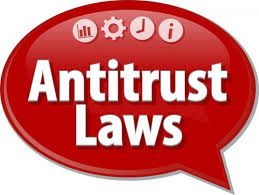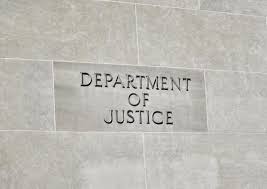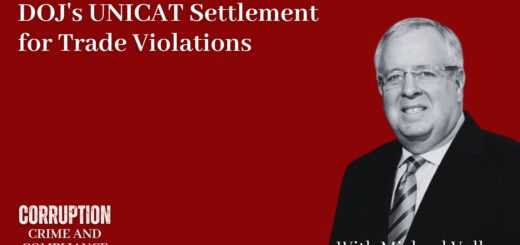DOJ’s Antitrust Division Issues New Guidance for Evaluation of Corporate Compliance Programs (Part II of II)

As part of its new corporate compliance credit program, the Justice Department’ Antitrust Division issued, for the first time in its history, guidance to assist prosecutors in the evaluation of compliance programs at the charging and sentencing stages of investigations. (Here).
The Antitrust Division’s new guidance joins DOJ’s Criminal Division Guidance (Here) and the Treasury Department’s Office of Foreign Asset Control’s (OFAC) Framework for Sanctions Compliance Programs (Here).
The Antitrust Division’s reflects the coordination with the Criminal Division’s document and recent changes to the Justice Manual, as well as the US Sentencing Guidelines.
Like the Criminal Division’s guidance, the Antitrust Division’s guidance is organized around three critical questions:
- Is the compliance program well designed?
- Is the compliance program being applied earnestly and in good faith?
- Does the compliance program actually work?
The nine elements of an effective compliance program include:
- The design and comprehensiveness of the program;
- The culture of compliance within the industry;
- Responsibility for, and resources dedicated to, antitrust compliance;
- Antitrust risk assessment techniques;
- Compliance training and communication to employees;
- Monitoring and auditing techniques, including continued review, evaluation and revision of the compliance program;
- Reporting mechanisms;
- Compliance incentives and discipline; and
- Remediation methods.
To focus the inquiry on criminal antitrust cases, prosecutors will ask three preliminary questions:
- Does the company’s compliance program address and prohibit criminal antitrust violations?
- Did the antitrust compliance program detect and facilitate prompt reporting of the violation?
- To what extent was a company’s senior management involved in the violation?

When it comes to sentencing, the new guidance includes a case-by-case analysis using a rebuttable presumption that a compliance program is not effective when certain “high level personnel” or “substantial authority personnel” “participated in, condoned, or were willfully ignorant of the offense.
The Antitrust Division Guidance is an excellent document that focuses on specific criminal antitrust conduct – criminal agreements relating to price-fixing, market allocation and bid-rigging. With this focus, the Antitrust Division Guidance tailors many of the well-known compliance elements to specific risk considerations, including competitor contacts and communications, industry meetings, price changes, bid monitoring and marketplace activities.
Here are some (but not all) of the interesting issues raised in Antitrust Division’s Guidance.
Design and Comprehensiveness: In reviewing a company’s antitrust compliance program, the guidance includes questions concerning the responsibility for integrating an antitrust compliance program in the business operations and controls. In particular, the guidance asks if the company tracks contacts with competitors, attendance at industry and other meetings with competitors, and seeks information on whether the company monitors such tracking data.
Culture of Compliance: The guidance reinforces other DOJ guidance on the importance of senior leadership communications through words and actions of a commitment to compliance.
Responsibility for the Compliance Program: The guidance reiterates inquiries concerning the designation of a chief compliance officer, the authority and reporting responsibilities of the CCO, and the capabilities and access to sufficient resources to execute the compliance program.
Risk Assessment: The guidance suggests that companies should focus risk assessments on industries/business lines; information collection and analyses for detecting potential misconduct; and periodic updating of the company’s risk analysis.

Training and Communications: The guidance inquires as to the company’s training program and the nature and extent of compliance communications; how the company tailors its training to the proper audience based on risk considerations.
Periodic Review and Monitoring: The guidance asks how the company evaluates its compliance program; the nature of compliance audits and the existence of screening systems for detecting potential violations based on communications monitoring or statistical testing.
Reporting: The guidance inquires as to the existence of an established reporting system which is adequately monitored and permits anonymous reporting in addition to established reporting systems.
Incentives and Discipline: The guidance asks what incentives are in place to promote performance in conformance with compliance expectations, and what disciplinary measures have been taken with respect to any antitrust policy violations. In this area, the guidance seeks information on company efforts to publicize disciplinary actions and treatment of senior executives who were non-cooperative in any antitrust investigation.
Detection and Remediation: The guidance focuses on whether the violation was detected by the antitrust compliance program, and asks, if not, why not?
















1 Response
[…] What is the new DOJ Antitrust Evaluation of Corporate Compliance Programs? Mike Volkov takes a deep dive in a two part series on Corruption Crime and Compliance. (Part 1and Part 2) […]